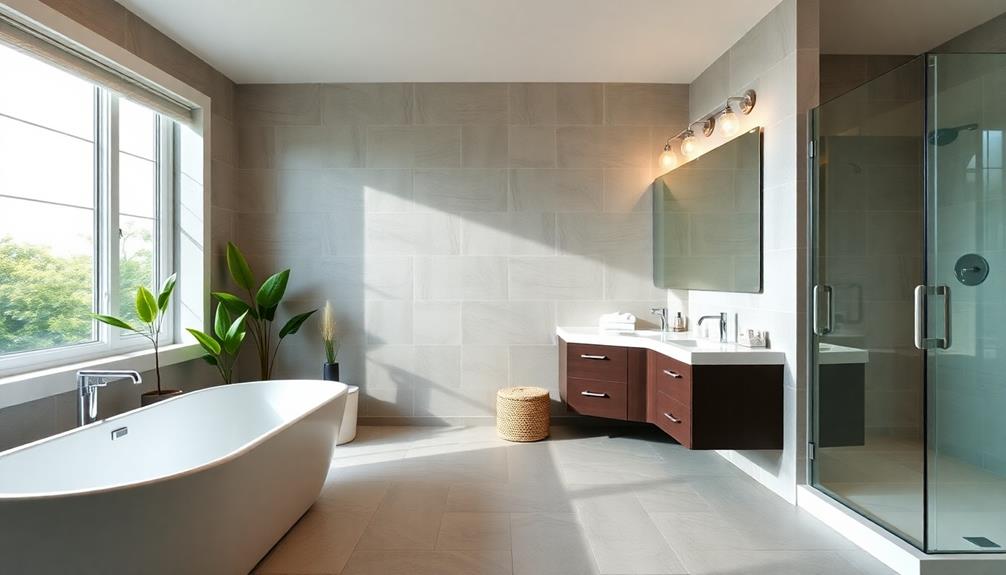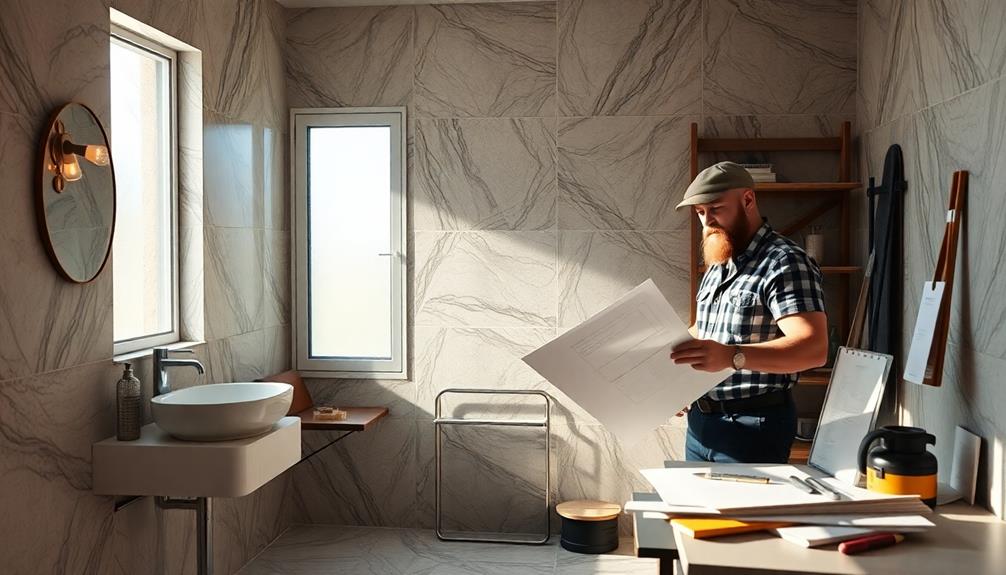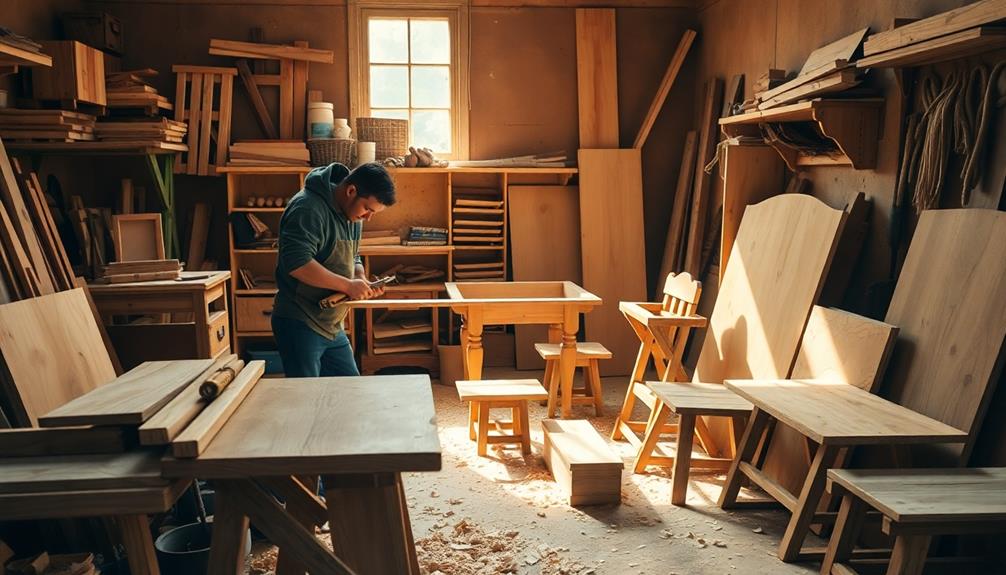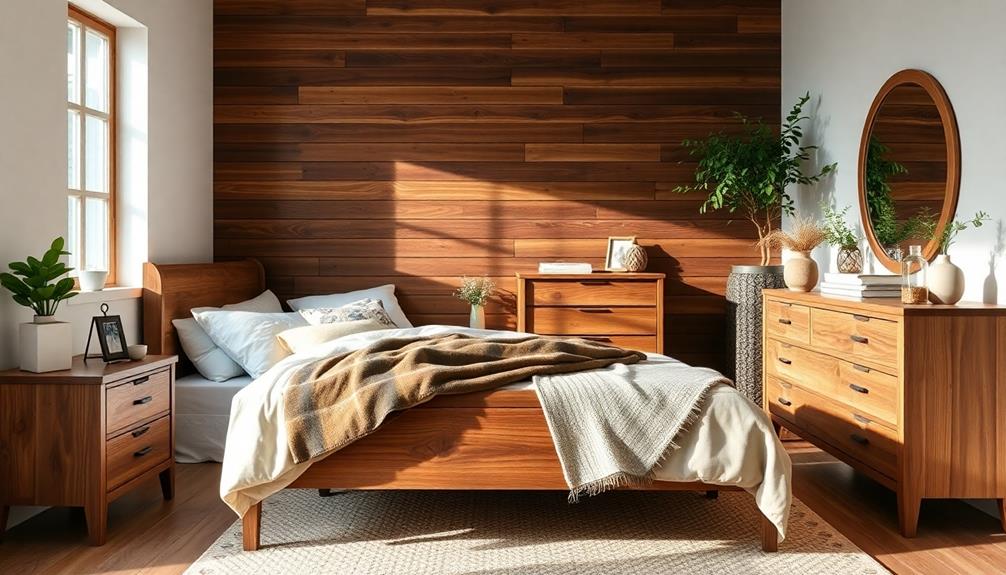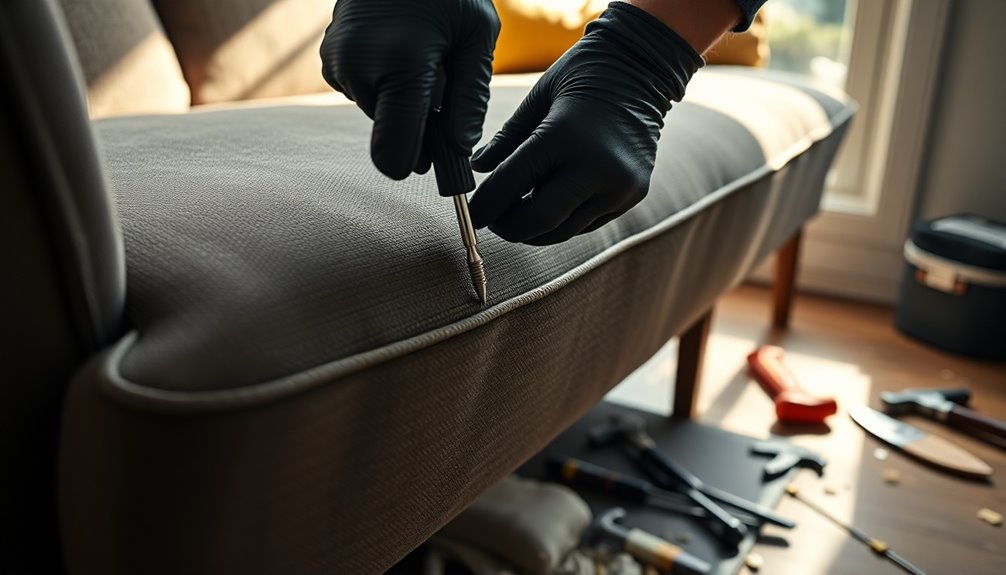To begin a full bathroom renovation, first assess your current layout and create a detailed design sketch. Establish a practical budget, including a contingency for any unexpected issues. Then, shut off the water and electricity, and remove any items that are not fixed in place. Carefully demolish the old structures, checking for any hidden damage. Install a waterproof barrier in the shower and select tile sizes that accommodate both function and drainage. Choose finishes and high-quality fixtures that align with your vision, and add personal touches such as decorations and plants. You will discover more tips to enhance your renovation as you delve further into the process. Once you have completed the initial steps, focus on adequate lighting and ventilation to keep the bathroom well-illuminated and free of excess moisture. Additionally, consider hiring a professional for tasks like plumbing and electrical work to ensure everything is in compliance with building codes. By researching and implementing these bathroom remodel tips, you can create a stylish and functional space that meets your needs and surpasses your expectations.
Key Takeaways
- Start with evaluating your current layout and sketching a detailed design to guide the remodeling process.
- Establish a realistic budget, including a 5-10% contingency for unexpected costs during the renovation.
- Demolish existing structures safely, inspecting for any hidden issues like mold or structural defects.
- Install moisture-resistant fixtures and materials, ensuring compliance with local building codes and permits.
- Finalize the design with decor and finishes that reflect your style, including smart devices for functionality.
Planning Your Bathroom Remodel
Planning a bathroom remodel starts with a clear vision of what you want to achieve. Begin by evaluating your current layout to identify necessary changes.
Sketch a detailed design of your ideal remodel to share with a general contractor, making sure everyone's on the same page. Establish a realistic budget that includes a 5-10% contingency for unforeseen issues like hidden water damage or material changes.
Additionally, consider integrating energy-efficient fixtures to lower your overall energy consumption and potentially save on utility bills, as seen with energy-efficient appliances.
Next, research and select fixtures and finishes that align with your aesthetic goals while considering their impact on your overall budget and timeline. This step is essential, as the right choices can elevate your space without breaking the bank.
Don't forget to obtain any necessary building permits and guarantee compliance with local building codes. This will help you avoid delays and complications during the remodeling process.
Demolition and Preparation Steps
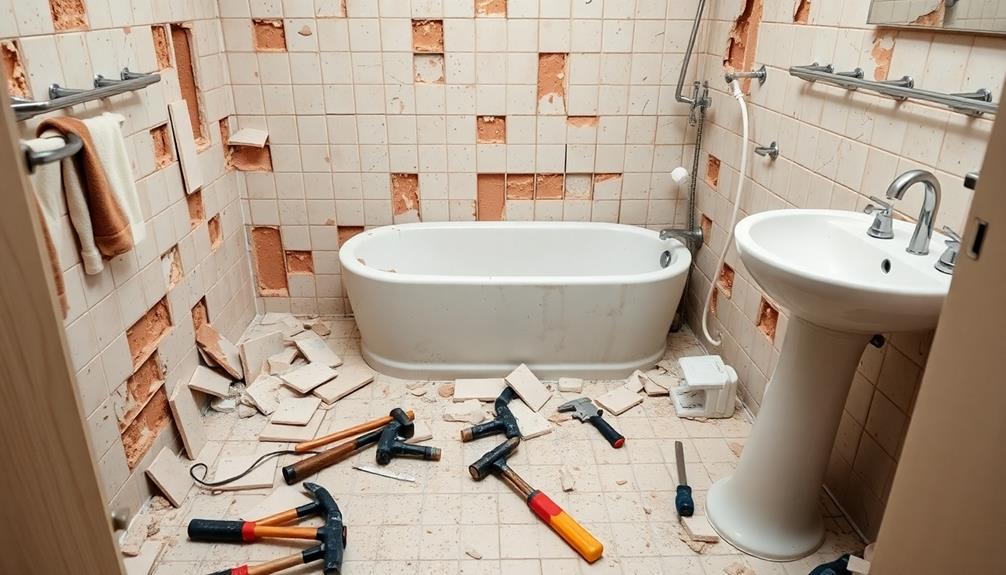
Before you plunge into your bathroom remodel, make sure you've taken the necessary safety precautions. First, turn off the electricity at the main breaker box and shut off the water supply to prevent any leaks or electrical hazards.
Once that's settled, remove accessories and non-fixed objects from the bathroom, storing anything being replaced safely to avoid damage. Additionally, consider consulting professionals for mechanic shops for fuel injection cleaning if your bathroom fixtures rely on any mechanical components.
Next, it's time for demolition. Use a reciprocating saw to carefully remove fixtures and avoid employing hammers on insulation, as this can lead to unnecessary damage.
While you're at it, inspect for hidden issues by opening walls during the demolition—this is vital for identifying potential problems like mold or structural defects.
As you work, keep an eye on the debris piling up. To make debris disposal easier, consider renting a dumpster. Choose an appropriate size based on your project's needs, so you can manage waste efficiently throughout the remodel process.
Tiling and Installation Process
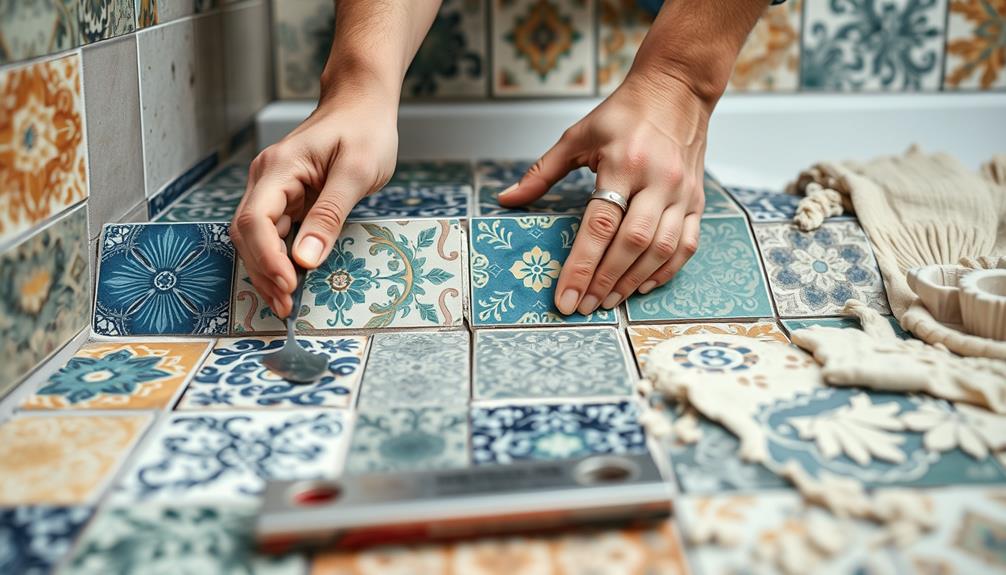
When you're ready to tackle the tiling and installation process, proper preparation is key to achieving a polished look. Start by making sure you've installed a PVC waterproof barrier in the shower area to prevent any water damage—this is essential for a successful bathroom renovation.
For your shower walls, consider using larger tiles for an appealing design, while opting for smaller tiles on the floor to accommodate the necessary drainage gradient. Additionally, consider the benefits of an energy-efficient heat pump to maintain a comfortable temperature during your renovation project as it can greatly reduce heating and cooling costs energy-efficient models.
Next, mix your thin-set mortar to a consistent mixture and apply it quickly, as it sets fast. Press the tiles firmly into the mortar to guarantee proper adhesion.
After completing the tile work, move on to grout installation. Choose a grout color that complements your tiles, filling in the gaps and securing everything in place.
Once you've finished tiling, conduct final inspections. Check for proper alignment and make sure that water flow is directed away from areas where it could cause damage.
This thorough approach will leave you with a beautifully tiled bathroom, ready for use. Remember, attention to detail during this phase can make a considerable difference in the final outcome!
Selecting Finishes and Amenities
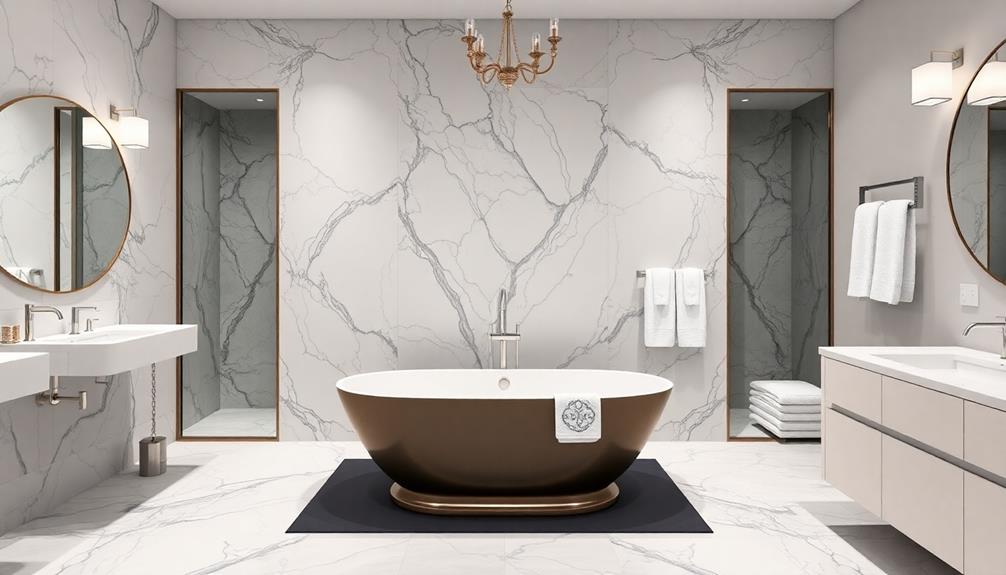
Choosing the right finishes and amenities can transform your bathroom into a stylish and functional space. Start by selecting finishes that align with your design vision. Consider using large format tiles for the floors to create a seamless look, while opting for smaller tiles on shower floors to guarantee proper drainage.
A well-prepared selection process can enhance your overall design experience, making it easier to visualize the end result and guaranteeing that every element serves a purpose in your design. Mood boards essential for visualizing design concepts can be an excellent tool for this stage.
Your color scheme plays an essential role; lighter colors can give your bathroom an airy feel, while darker tones add depth and richness. Incorporate moisture-resistant materials, such as semi-gloss paint and quartz surfaces, which aren't only attractive but also easy to maintain in high-humidity environments.
When it comes to fixtures, prioritize high-quality options like faucets and showerheads, which can vary widely in price. Invest in pieces that offer both functionality and style for your bathroom remodel.
Final Touches and Personalization
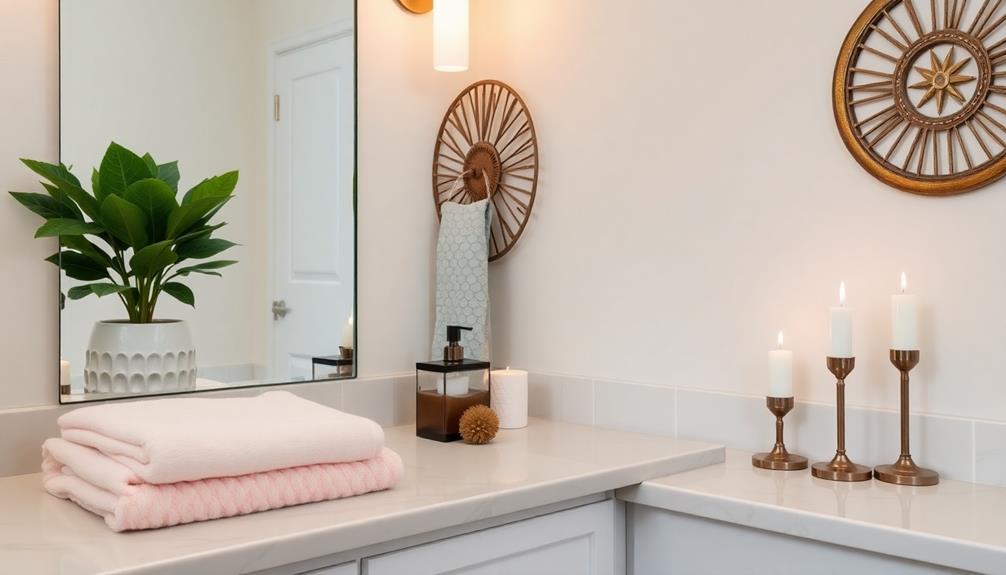
With your finishes and amenities in place, it's time to focus on the final touches that will personalize your bathroom. Start by selecting paint samples that resonate with your chosen color scheme. Semi-gloss paint is a great choice for mold resistance, ensuring your walls stay fresh and vibrant.
Additionally, consider incorporating smart budgeting techniques to manage your renovation costs effectively, as having a solid budget plan can help avoid overspending. Once you've decided on a color, it's time to enhance functionality and style with smart devices like motion-sensor lighting fixtures or smart faucets that can streamline your daily routines.
Next, choose decor items that complement your design theme. Rugs, mirrors, and faucets should align with your color scheme to create a cohesive aesthetic.
Don't forget to introduce living plants; they add a natural touch and can elevate the ambiance. Just make sure to research plant types that thrive in low-light conditions, typical in bathrooms.
Frequently Asked Questions
In What Order Should You Renovate a Bathroom?
You should start with planning and budgeting, then move to demolition, followed by plumbing and electrical rough-ins. Next, focus on wall treatments and tiling, and finally, install fixtures and finishes for a complete renovation.
What Are the Steps to a Full Bathroom Remodel?
To tackle a full bathroom remodel, you'll start with planning and budgeting. Then, you'll demolish existing fixtures, address plumbing, complete structural work, install drywall and tiles, and finish with fixtures, inspections, and final touches.
What Is the Most Expensive Part of a Bathroom Remodel?
Labor costs can feel like you're funding a small country! When you remodel a bathroom, these expenses often account for 20-35% of your budget, especially if you're dealing with complex projects or high-end materials.
How to Renovate a Bathroom Step by Step?
To renovate your bathroom step by step, start by planning and budgeting. Next, demolish old fixtures, inspect structures, install plumbing and electrical, lay flooring, and finally, add cabinets and fixtures. Don't forget to inspect everything!
Conclusion
So, you've survived the chaos of your bathroom remodel, dodging flying tiles and questionable plumbing choices. You've picked out finishes that scream "luxury" while your wallet whispers "regret." But hey, at least you've got a stunning new space to contemplate your life choices while sitting on that fancy toilet you splurged on! Remember, it's not just a bathroom; it's a shrine to your DIY ambitions—or a monument to your procrastination. Enjoy your masterpiece; you've earned it!
